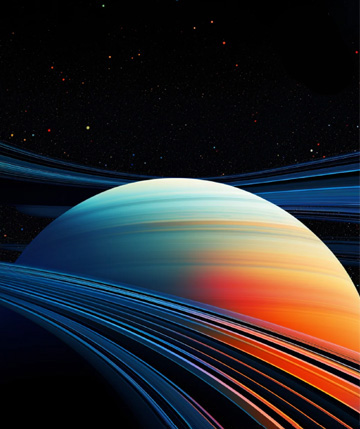
-
2024.12.04
Imaging Giant Planet Formation [EN]
<p>The new generation of infrared high-contrast imagers and sub-mm interferometer has been revolutionising our view of planet formation for the last decade. Protoplanetary discs have now been imaged at a high level of detail, revealing a wealth of structures including cavities, annular gaps, spiral arms, shadows and asymmetries. In order to connect these structures to forming planets and provide t...</p>
详情 -
2024.11.14
Highlights of the MeerTime Key Science Project with MeerKAT [EN]
<p>Using a novel new teaching tool that uses a game engine to create an interactive astronomy universe Professor Matthew Bailes will talk about the highlights of the MeerTime program at MeerKAT. These include the discovery and timing of many new pulsars in globular clusters, giant pulse studies, many new pulsar masses, insights from the eclipses of the double pulsar and a tantalising Hellings and ...</p>
详情 -
2024.11.06
A chemical survey of exoplanet atmospheres with Ariel
<p>TBD</p>
详情 -
2024.09.12
Tensions on small scales: Too many galaxy-galaxy strong lenses in galaxy clusters?
<p>In the standard cosmological model, the matter content of the Universe is dominated by cold dark matter (CDM), collisionless particles that interact with ordinary matter (baryons) only through gravity. Gravitationally bound dark-matter halos form hierarchically, with the most massive systems growing through mergers of smaller ones. As structure assembles in this fashion, large dark-matter halos...</p>
详情 -
2024.09.03
The role of mixing, mass-loss and rotation in stellar evolution
<p>Despite the efforts made in recent decades to obtain more realistic stellar models, considerable uncertainties still remain due to our incomplete knowledge of some complex physical processes that occur within them, such as accretion, convection, mass loss, rotation, to name a few of them. Modeling these processes still relies on empirical calibrations and this has a significant impact on theore...</p>
详情 -
2024.08.29
Exploring Stellar Astrophysics and Star-Planet Interactions Through Observational Studies
<p>Photometric and spectroscopic observations of individual stars, binaries, and group of stars in coeval populations offer valuable insights into various stellar characteristics, such as chemical abundance, radial velocity, multiplicity, mass, distance, and age. The chemical abundances provide critical information about the internal physics of stars, the interactions between planets and their hos...</p>
详情 -
2024.06.05
Cosmological formation of globular clusters
<p>Cosmological formation of globular cluster</p>
详情 -
2024.05.29
A closer look at the building blocks of planetesimals: characterizing the dust content of protoplanetary disks
<p>The dust content of protoplanetary disks plays a crucial role in the planet formation process. The key ingredients are not only the total budget of solid mass and the dust particle size distribution, but also how these are distributed throughout the protoplanetary disk. Characterizing the dust surface density, particle properties, and size distribution within the disk and its substructures is, ...</p>
详情 -
2024.05.14
Gravitational radiation from oscillations of ultracompact stars
<p>By analytically solving the Teukolsky gravitational wave equation for the spacetime of an ultracompact star of constant density, we derive exact and simple formulae that completely describe weakly damped oscillations trapped inside such stars. No similar complete analytic solution was known before, despite several attempts to find it. Our solution is cast in terms of the quasi normal modes of o...</p>
详情 -
2023.06.29
Adaptive Optics Facility and MUSE at the VLT-UT4
<p>In this talk, I will present the Adaptive Optics Facility (AOF) and the MUSE instrument at VLT/UT4. AOF is the new generation cutting-edge adaptive optics system for the instruments at UT4. With the high-performance deformable secondary mirror and 4 laser guide stars system, AOF enables to correct atmospheric turbulence effects on the optical wavelength, facilitating the Multi-Unit Spectrosco...</p>
详情



